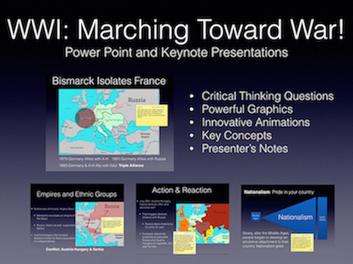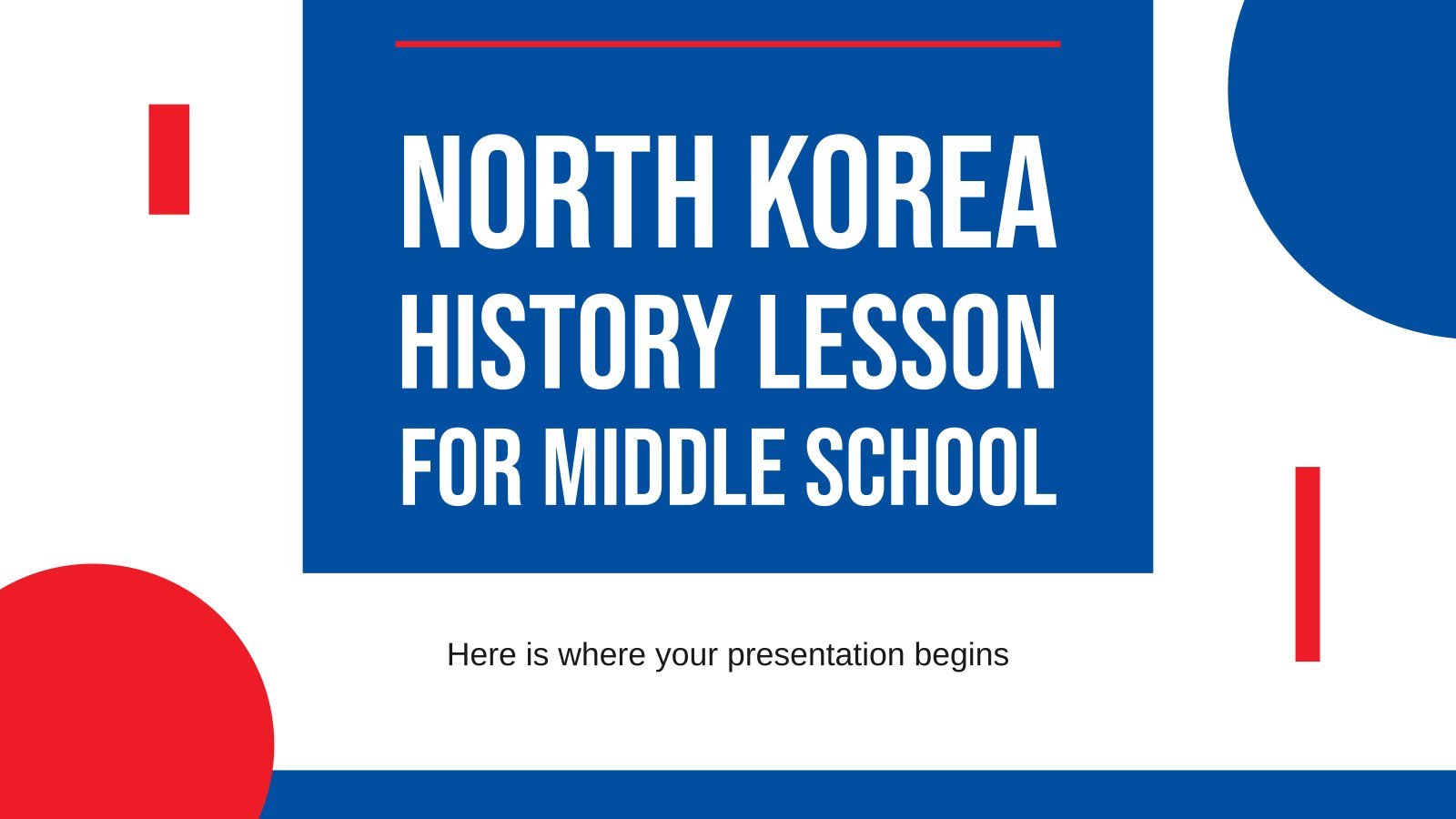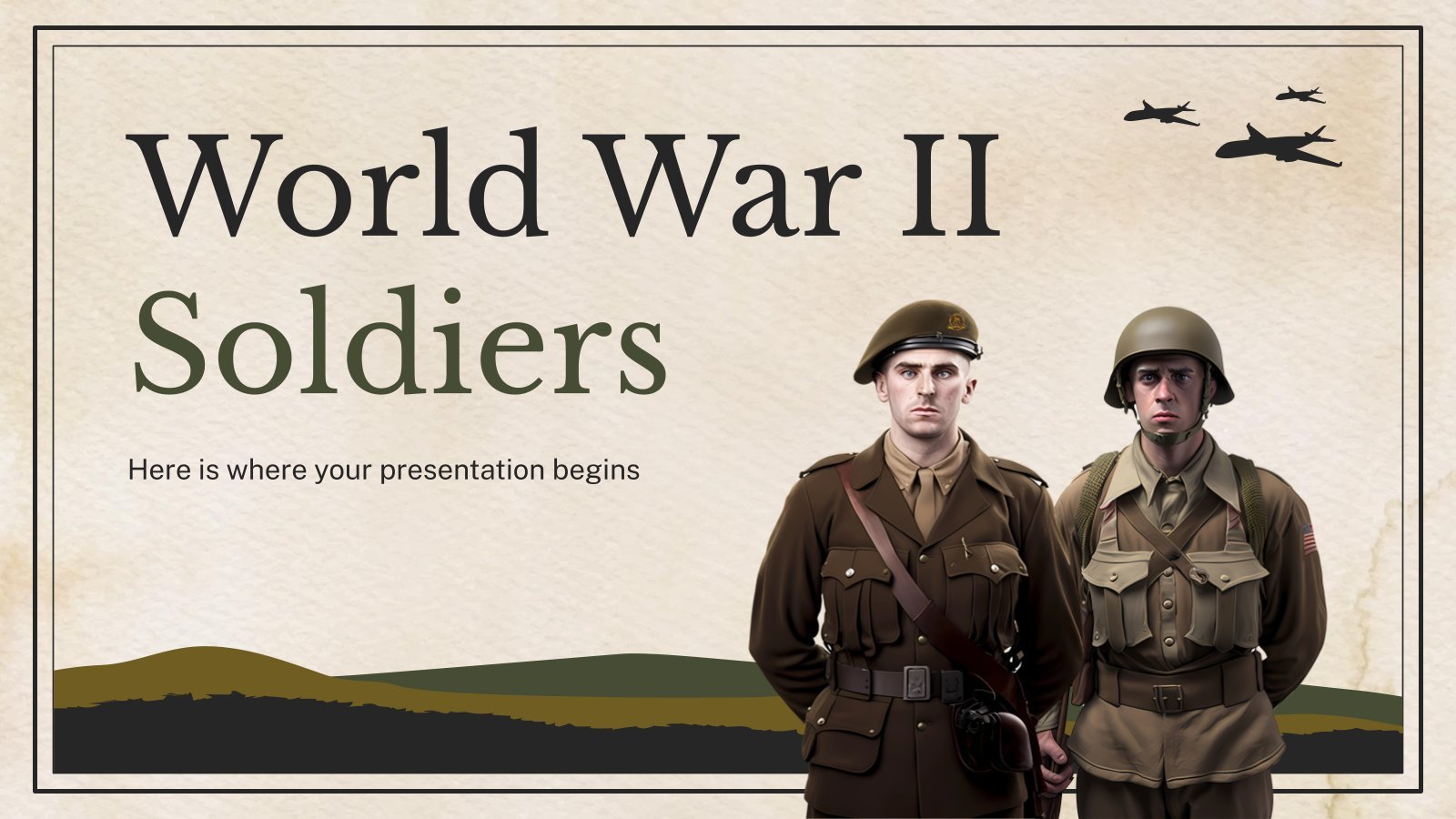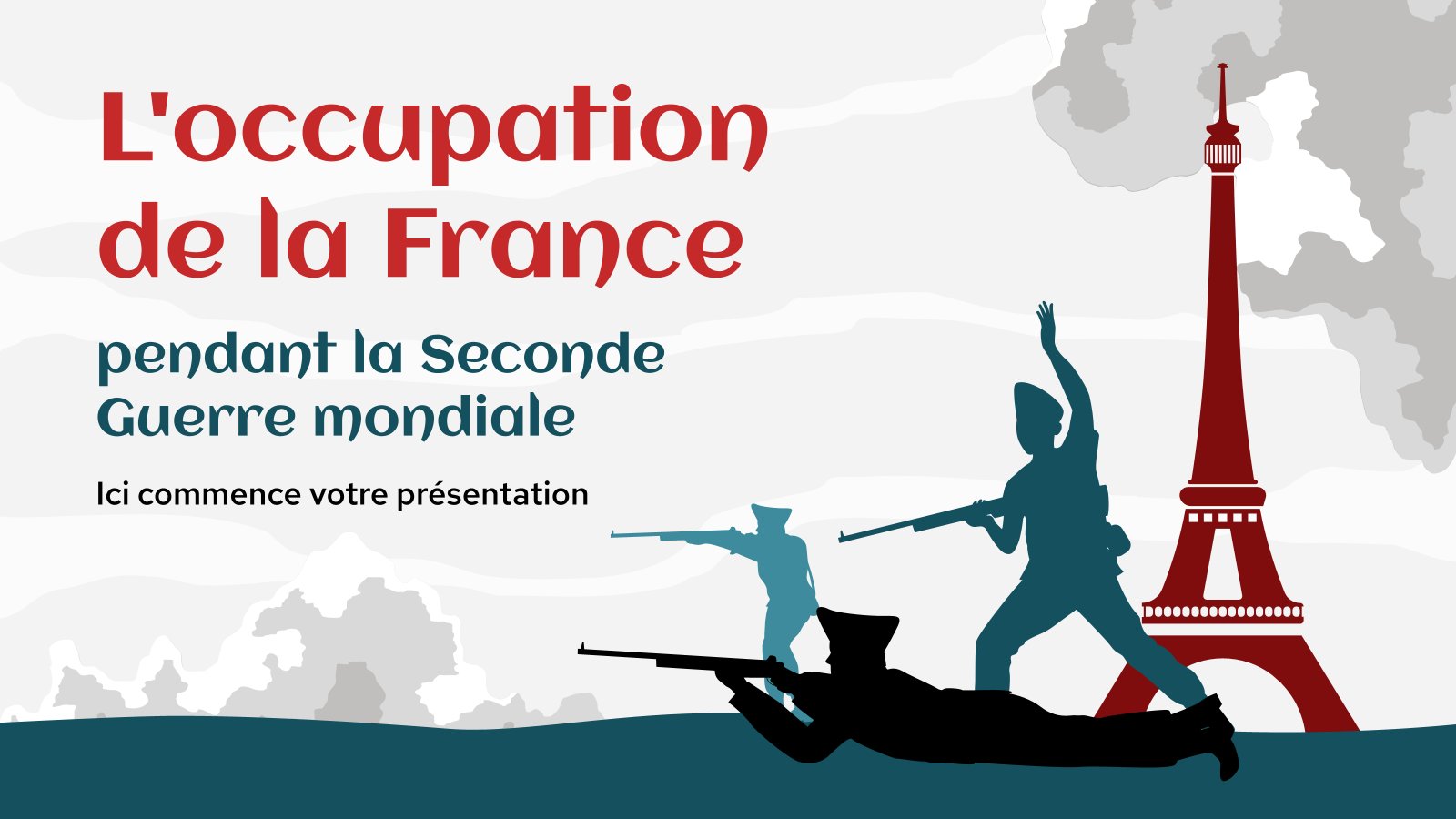

WWI MARCHING TOWARD WAR
History presentations, engaging history power points.
Mr. Harms has designed a number of Power Point and Keynote presentations with key Social Studies Concepts and Critical Thinking Questions to help students understand history. Designed by a teacher for teachers, this Power Point focuses on "Marching Toward War 1870-1914"
Overview These history presentations are designed to give students an overview of the events in which Europe started on its path to war in Marching Toward War . Students will be shown maps, animations and descriptions of some of the major events that led to World War I.
Customizable The History Presentation is totally customizable, allowing you to add your own pictures, graphics and animations to take what we've done even farther.
Benefit What is your time worth? Our basic pricing system for History Presentations is 10 cents per slide. Some title slides may only take 30 seconds to create, but complex slides with animations and coordinated builds for complicated topics may take 30 minutes or more. It's not unusual for a presentation to take between 3 and 7 hours of work. What could you do with 6 or 7 free hours?
Topics Included The Topics include: Competition, Imperialism, Militarism, Nationalism, Alliances, Bismarck, Wilhelm II, Crisis In The Balkans, Ottoman Empire, Austria-Hungary, Boznia-Herzegovina, Archduke Franz Ferdinand, Gavrilo Princip, Black Hand and Mobilization.
Included in The Presentation Package: 1. Keynote Presentation 2. Power Point Presentation 3. Text edit file outline of the presentation and presenter's notes.
The package is a digital download (Zip File) of these three items.
Modern World History Presentations We have a number of Power Points related to World War 1. Teaching an entire unit on World War 1. Then check out our interactive World War 1 lesson plans . These units are proven to engage students in a way that text books and documentaries can’t. Hundreds of teachers are using these lesson plans to bring history to life for students. It’s a unit you’ll use year after year.
Click The Link Below To Get Your Copy
MCDOUGAL LITTEL'S WORLD HISTORY: PATTERNS OF INTERACTION
Unit 7 The World At War Chapter 29 The Great War Section 1 "Marching Toward War"
Module 25 World War I 1914-1918
Lesson 1 Marching Toward War
These materials were prepared by Harms LLC and have neither been developed, reviewed, nor endorsed by Houghton Mifflin Harcourt Publishing Company, publisher of the original WORLD HISTORY: Patterns of Interaction work on which this material is based.

Video Preview
Bundle All Mr. Harms Modern World History Presentations
- Marching Toward War
- Europe Plunges Into War
- A Global Conflict
- A Flawed Peace
- History Classics
- Your Profile
- Find History on Facebook (Opens in a new window)
- Find History on Twitter (Opens in a new window)
- Find History on YouTube (Opens in a new window)
- Find History on Instagram (Opens in a new window)
- Find History on TikTok (Opens in a new window)
- This Day In History
- History Podcasts
- History Vault
By: History.com Editors
Updated: April 20, 2023 | Original: October 15, 2009

The Civil War in the United States began in 1861, after decades of simmering tensions between northern and southern states over slavery, states’ rights and westward expansion. The election of Abraham Lincoln in 1860 caused seven southern states to secede and form the Confederate States of America; four more states soon joined them. The War Between the States, as the Civil War was also known, ended in Confederate surrender in 1865. The conflict was the costliest and deadliest war ever fought on American soil, with some 620,000 of 2.4 million soldiers killed, millions more injured and much of the South left in ruin.
Causes of the Civil War
In the mid-19th century, while the United States was experiencing an era of tremendous growth, a fundamental economic difference existed between the country’s northern and southern regions.
In the North, manufacturing and industry was well established, and agriculture was mostly limited to small-scale farms, while the South’s economy was based on a system of large-scale farming that depended on the labor of Black enslaved people to grow certain crops, especially cotton and tobacco.
Growing abolitionist sentiment in the North after the 1830s and northern opposition to slavery’s extension into the new western territories led many southerners to fear that the existence of slavery in America —and thus the backbone of their economy—was in danger.
Did you know? Confederate General Thomas Jonathan Jackson earned his famous nickname, "Stonewall," from his steadfast defensive efforts in the First Battle of Bull Run (First Manassas). At Chancellorsville, Jackson was shot by one of his own men, who mistook him for Union cavalry. His arm was amputated, and he died from pneumonia eight days later.
In 1854, the U.S. Congress passed the Kansas-Nebraska Act , which essentially opened all new territories to slavery by asserting the rule of popular sovereignty over congressional edict. Pro- and anti-slavery forces struggled violently in “ Bleeding Kansas ,” while opposition to the act in the North led to the formation of the Republican Party , a new political entity based on the principle of opposing slavery’s extension into the western territories. After the Supreme Court’s ruling in the Dred Scott case (1857) confirmed the legality of slavery in the territories, the abolitionist John Brown’s raid at Harper’s Ferry in 1859 convinced more and more southerners that their northern neighbors were bent on the destruction of the “peculiar institution” that sustained them. Abraham Lincoln ’s election in November 1860 was the final straw, and within three months seven southern states—South Carolina, Mississippi, Florida, Alabama, Georgia, Louisiana and Texas—had seceded from the United States.
Outbreak of the Civil War (1861)
Even as Lincoln took office in March 1861, Confederate forces threatened the federal-held Fort Sumter in Charleston, South Carolina. On April 12, after Lincoln ordered a fleet to resupply Sumter, Confederate artillery fired the first shots of the Civil War. Sumter’s commander, Major Robert Anderson, surrendered after less than two days of bombardment, leaving the fort in the hands of Confederate forces under Pierre G.T. Beauregard. Four more southern states—Virginia, Arkansas, North Carolina and Tennessee—joined the Confederacy after Fort Sumter. Border slave states like Missouri, Kentucky and Maryland did not secede, but there was much Confederate sympathy among their citizens.
Though on the surface the Civil War may have seemed a lopsided conflict, with the 23 states of the Union enjoying an enormous advantage in population, manufacturing (including arms production) and railroad construction, the Confederates had a strong military tradition, along with some of the best soldiers and commanders in the nation. They also had a cause they believed in: preserving their long-held traditions and institutions, chief among these being slavery.
In the First Battle of Bull Run (known in the South as First Manassas) on July 21, 1861, 35,000 Confederate soldiers under the command of Thomas Jonathan “Stonewall” Jackson forced a greater number of Union forces (or Federals) to retreat towards Washington, D.C., dashing any hopes of a quick Union victory and leading Lincoln to call for 500,000 more recruits. In fact, both sides’ initial call for troops had to be widened after it became clear that the war would not be a limited or short conflict.
The Civil War in Virginia (1862)
George B. McClellan —who replaced the aging General Winfield Scott as supreme commander of the Union Army after the first months of the war—was beloved by his troops, but his reluctance to advance frustrated Lincoln. In the spring of 1862, McClellan finally led his Army of the Potomac up the peninsula between the York and James Rivers, capturing Yorktown on May 4. The combined forces of Robert E. Lee and Jackson successfully drove back McClellan’s army in the Seven Days’ Battles (June 25-July 1), and a cautious McClellan called for yet more reinforcements in order to move against Richmond. Lincoln refused, and instead withdrew the Army of the Potomac to Washington. By mid-1862, McClellan had been replaced as Union general-in-chief by Henry W. Halleck, though he remained in command of the Army of the Potomac.
Lee then moved his troops northwards and split his men, sending Jackson to meet Pope’s forces near Manassas, while Lee himself moved separately with the second half of the army. On August 29, Union troops led by John Pope struck Jackson’s forces in the Second Battle of Bull Run (Second Manassas). The next day, Lee hit the Federal left flank with a massive assault, driving Pope’s men back towards Washington. On the heels of his victory at Manassas, Lee began the first Confederate invasion of the North. Despite contradictory orders from Lincoln and Halleck, McClellan was able to reorganize his army and strike at Lee on September 14 in Maryland, driving the Confederates back to a defensive position along Antietam Creek, near Sharpsburg.
On September 17, the Army of the Potomac hit Lee’s forces (reinforced by Jackson’s) in what became the war’s bloodiest single day of fighting. Total casualties at the Battle of Antietam (also known as the Battle of Sharpsburg) numbered 12,410 of some 69,000 troops on the Union side, and 13,724 of around 52,000 for the Confederates. The Union victory at Antietam would prove decisive, as it halted the Confederate advance in Maryland and forced Lee to retreat into Virginia. Still, McClellan’s failure to pursue his advantage earned him the scorn of Lincoln and Halleck, who removed him from command in favor of Ambrose E. Burnside . Burnside’s assault on Lee’s troops near Fredericksburg on December 13 ended in heavy Union casualties and a Confederate victory; he was promptly replaced by Joseph “Fighting Joe” Hooker , and both armies settled into winter quarters across the Rappahannock River from each other.
After the Emancipation Proclamation (1863-4)
Lincoln had used the occasion of the Union victory at Antietam to issue a preliminary Emancipation Proclamation , which freed all enslaved people in the rebellious states after January 1, 1863. He justified his decision as a wartime measure, and did not go so far as to free the enslaved people in the border states loyal to the Union. Still, the Emancipation Proclamation deprived the Confederacy of the bulk of its labor forces and put international public opinion strongly on the Union side. Some 186,000 Black Civil War soldiers would join the Union Army by the time the war ended in 1865, and 38,000 lost their lives.
In the spring of 1863, Hooker’s plans for a Union offensive were thwarted by a surprise attack by the bulk of Lee’s forces on May 1, whereupon Hooker pulled his men back to Chancellorsville. The Confederates gained a costly victory in the Battle of Chancellorsville , suffering 13,000 casualties (around 22 percent of their troops); the Union lost 17,000 men (15 percent). Lee launched another invasion of the North in June, attacking Union forces commanded by General George Meade on July 1 near Gettysburg, in southern Pennsylvania. Over three days of fierce fighting, the Confederates were unable to push through the Union center, and suffered casualties of close to 60 percent.
Meade failed to counterattack, however, and Lee’s remaining forces were able to escape into Virginia, ending the last Confederate invasion of the North. Also in July 1863, Union forces under Ulysses S. Grant took Vicksburg (Mississippi) in the Siege of Vicksburg , a victory that would prove to be the turning point of the war in the western theater. After a Confederate victory at Chickamauga Creek, Georgia, just south of Chattanooga, Tennessee, in September, Lincoln expanded Grant’s command, and he led a reinforced Federal army (including two corps from the Army of the Potomac) to victory in the Battle of Chattanooga in late November.
Toward a Union Victory (1864-65)
In March 1864, Lincoln put Grant in supreme command of the Union armies, replacing Halleck. Leaving William Tecumseh Sherman in control in the West, Grant headed to Washington, where he led the Army of the Potomac towards Lee’s troops in northern Virginia. Despite heavy Union casualties in the Battle of the Wilderness and at Spotsylvania (both May 1864), at Cold Harbor (early June) and the key rail center of Petersburg (June), Grant pursued a strategy of attrition, putting Petersburg under siege for the next nine months.
Sherman outmaneuvered Confederate forces to take Atlanta by September, after which he and some 60,000 Union troops began the famous “March to the Sea,” devastating Georgia on the way to capturing Savannah on December 21. Columbia and Charleston, South Carolina, fell to Sherman’s men by mid-February, and Jefferson Davis belatedly handed over the supreme command to Lee, with the Confederate war effort on its last legs. Sherman pressed on through North Carolina, capturing Fayetteville, Bentonville, Goldsboro and Raleigh by mid-April.
Meanwhile, exhausted by the Union siege of Petersburg and Richmond, Lee’s forces made a last attempt at resistance, attacking and captured the Federal-controlled Fort Stedman on March 25. An immediate counterattack reversed the victory, however, and on the night of April 2-3 Lee’s forces evacuated Richmond. For most of the next week, Grant and Meade pursued the Confederates along the Appomattox River, finally exhausting their possibilities for escape. Grant accepted Lee’s surrender at Appomattox Court House on April 9. On the eve of victory, the Union lost its great leader: The actor and Confederate sympathizer John Wilkes Booth assassinated President Lincoln at Ford’s Theatre in Washington on April 14. Sherman received Johnston’s surrender at Durham Station, North Carolina on April 26, effectively ending the Civil War.

HISTORY Vault: The Secret History of the Civil War
The American Civil War is one of the most studied and dissected events in our history—but what you don't know may surprise you.

Sign up for Inside History
Get HISTORY’s most fascinating stories delivered to your inbox three times a week.
By submitting your information, you agree to receive emails from HISTORY and A+E Networks. You can opt out at any time. You must be 16 years or older and a resident of the United States.
More details : Privacy Notice | Terms of Use | Contact Us
- Skip to primary navigation
- Skip to main content
- Skip to footer
History Presentations by Edward E. Gordon
Presentation Topic Areas
History presentations offered by edward e. gordon.

- Researches the past — His extensive historical studies challenge audiences to think about history’s lessons for today and for the future.
- Delivers powerful yet entertaining messages that engage audiences supported by meticulous research on contents.
Presentation Topic Areas:
- World War II The Second World War (1939-1945) was civilization’s most destructive conflict. These programs elucidate the iconic events that helped to set the course of 20th-century history for the next 50 years and beyond.
- Aviation History Aviation has a relatively short but varied history. These programs offer a window into two very different eras of aviation. One program explores how zeppelins were developed as the first commercial passenger aircraft and their role in military operations. The other programs focus on World War II campaigns in which aviation was the centerpiece.
- U.S. Civil War The War Between the States (1861-1865) was the epic struggle that ended slavery in the United States and helped to shape the American ideals of liberty and freedom When the Union and Confederate losses are combined, more Americans died in this conflict than in all the other U.S. wars. These programs examine the larger historical context of the Civil War, analyze the personalities of the civil and military leaders of the North and South, and chronicle the principal events of its major battles.
- The American West From the Lewis and Clark exploration (1804-1806) to the official closing of the American frontier (1890), the history of the American West presents a complex record of both triumph and tragedy. The programs present the story of both the heroes and villains who battled the elements and native tribes and struggled through the rugged terrain to found new settlements that in the end resulted in the undermining of the Native American’s way of life.
- History of the Roman Catholic Church Both praised and reviled, the Roman Catholic Church remains the oldest continuing institution in world history. Both saints and sinners have determined its direction and impact through the centuries down to the present day. These programs explore various aspects of the history of the Papacy and of the Catholic Church in the United States.
Additional Programs:
- Presentations on workforce development and the future of jobs

Testimonials:

“Motivational, Dynamic, Inspiring, Informative”
Superlatives like these are typical responses to an Edward Gordon presentation. His programs have wide appeal. The many types of organizations for which he has given presentations include museums, libraries, academic institutions, alumni associations, charitable organizations, professional associations, retirement centers, and church groups.
“The presentation was a testament to your professionalism (adherence to facts and attention to detail) and great gifts as an orator.” — Greg Kenny, Program Coordinator Palm Springs Air Museum
“You had them [the audience] spellbound by your encyclopedic knowledge of your subject and by the excellent graphics and photos you presented.” — Blaine Mack, President Old Bold Pilots
“Dr. Edward Gordon engages an audience vis-a-vis his enlightened, energetic, and erudite approach relating to history, particularly of World War II and both the tragedies and triumphs which ensued. He is a master story teller presenting fact, not fiction, in an entertaining and approachable light.” — Susan Meyer, Program Chair Northwestern University Alumni Association of the Coachella Valley
“Your outstanding programs are exciting, informative, and extremely well received by our visitors.” — Sharon Maguire, President/Museum Director Palm Springs Air Museum
“Your presentation was well prepared, well delivered and stimulating. What else could we ask for?” — Jan Varnum Phi Delta Kappa Chapter University of Main
“In these thoughtful presentations, Dr. Gordon has demonstrated that he is both a professional historian and professional speaker who is expert at informing and entertaining diverse audiences. I can wholeheartedly recommend him as a lecturer.” — David Ramsay, President The Churchillians of the Desert

Edward E. Gordon History Presentations Imperial Consulting Corporation
220 East Walton Place, #8E · Chicago, IL 60611 Phone: 312.664.5196
For more information, contact us at [email protected]
Got any suggestions?
We want to hear from you! Send us a message and help improve Slidesgo
Top searches
Trending searches

solar eclipse
25 templates

12 templates

north korea

7 templates

21 templates

48 templates
Second World War
Second world war presentation, free google slides theme and powerpoint template.
This one is a great and suitable template if you need to give a war-related presentation. Kept in tones of gray, beige and red, its illustrations are subtle and minimal but still a reminder of the sorrow that unfurls when weapons are used. Use this design to talk about history, politics, the military or weaponry - it’s flexible and fully editable, so you can tweak it as you like to suit your content to a T. Grab this template and your presentation about war will be a lot easier to prepare!
Features of this template
- 100% editable and easy to modify
- 36 different slides to impress your audience
- Contains easy-to-edit graphics such as graphs, maps, tables, timelines and mockups
- Includes 500+ icons and Flaticon’s extension for customizing your slides
- Designed to be used in Google Slides and Microsoft PowerPoint
- 16:9 widescreen format suitable for all types of screens
- Includes information about fonts, colors, and credits of the resources used
How can I use the template?
Am I free to use the templates?
How to attribute?
Attribution required If you are a free user, you must attribute Slidesgo by keeping the slide where the credits appear. How to attribute?
Related posts on our blog.

How to Add, Duplicate, Move, Delete or Hide Slides in Google Slides

How to Change Layouts in PowerPoint

How to Change the Slide Size in Google Slides
Related presentations.

Premium template
Unlock this template and gain unlimited access

Register for free and start editing online
Facility for Rare Isotope Beams
At michigan state university, george perkovich gives lecture on nuclear policy at frib laboratory.
George Perkovich, the Ken Olivier and Angela Nomellini Chair and vice president for studies at the Carnegie Endowment for International Peace , gave a lecture on 20 March at the FRIB Laboratory. Perkovich’s lecture is part of MSU’s Distinguished Nuclear Policy Lecture series. As part of his visit, Sean Liddick, associate professor of chemistry at FRIB and in MSU’s Department of Chemistry, and FRIB associate director for experimental science, hosted Perkovich on a tour of the facility and discussed FRIB’s history, progress, science, and technology along the way.
The “Does Nuclear Arms Control with Russia and China Have a Future?” abstract states: “Nuclear arms control for the foreseeable future will be hindered by polarized politics that impact compromise with foreign adversaries and internal opponents, and by the emergence of new technologies and multi-party rather than bilateral strategic contests. This presentation will explore how these processes confound military planners, political leaders, and diplomatic negotiators in each country who would have to figure out what sorts of arms control bargains are desirable and acceptable. History suggests ways to overcome these obstacles, but the pathways to be navigated today are more challenging.”
Perkovich, who oversees Carnegie’s Technology and International Affairs Program and Nuclear Policy Program, works primarily on nuclear strategy and nonproliferation issues, cyberconflict, and new approaches to international public-private management of strategic technologies. He is the author of the prize-winning book, India’s Nuclear Bomb (University of California Press, 1999), and co-author of, Not War, Not Peace? Motivating Pakistan to Prevent Cross-Border Terrorism (Oxford University Press, 2016).
Perkovich’s short-form writing has appeared in leading international journals and newspapers. He has advised many agencies of the U.S. government, and testified before both houses of Congress. He has been a member of the National Academy of Science’s Committee on Arms Control and International Security, the Council on Foreign Relations Task Force on Nuclear Policy, and was a principal adviser to the International Commission on Nuclear Nonproliferation and Disarmament, a joint initiative of the governments of Japan and Australia. He served as a speechwriter and foreign policy adviser to Senator Joe Biden (D-Del.) from 1989-90.
The Distinguished Nuclear Policy Lecture series is a partnership between Michigan State University’s James Madison College and FRIB that brings global policy experts to campus for talks about the political and scientific communities. This lecture series brings together experts and scholars from diverse backgrounds to discuss issues related to nuclear policy, arms control, and non-proliferation. The lectures provide insights, analysis, and perspectives on the current challenges and opportunities in the evolving field of nuclear policy.

IMAGES
VIDEO
COMMENTS
Civil War and Reconstruction - History - 8th Grade. Teach the pivotal events of the Civil War and Reconstruction era with this fully editable Google Slides and PowerPoint template. Designed for a middle school History class, the design captures the essence of the era with its vintage paper background and engaging military illustrations.
a. single leader 4 5 6. World War II - 1939-1945 Ms. Fillingham Ms. Fillingham / U.S. History. February 23, 1945, by Joe Rosenthal. It depicts five U.S. Marines and a U.S. Navy corpsman raising a U.S. flag atop Mount Saribachi during the Battle of Iwo Jima in World War II. HTML view of the presentation.
Years: 1939-1945 War between the Allies and Axis Powers that erupted due to various reasons Germany starts WWII Main Events: Appeasement, Invasion of Poland, D-Day, dropping of the Atomic Bombs 3 Before we move into World War II, you need to know how Adolf Hitler rose to power in Germany 4 5 Rise of Hitler 1. Germany had to pay reparations due ...
World War I started in 1914, after the assassination of Archduke Franz Ferdinand, and ended in 1918. During the conflict, the countries of Germany, Austria-Hungary, Bulgaria and the Ottoman Empire ...
war, in the popular sense, a conflict between political groups involving hostilities of considerable duration and magnitude. In the usage of social science, certain qualifications are added. Sociologists usually apply the term to such conflicts only if they are initiated and conducted in accordance with socially recognized forms. They treat war as an institution recognized in custom or in law.
Free Google Slides theme and PowerPoint template. Did you know that people used to call WWI "the Great War"? There was no way they would know that there would be a second one later, so that explains it. But there are other more important things to explain and teach about WWI, like its impact in Europe. That's a task for history teachers, and we ...
If you're ready to take your students on a history trip back to 1914, then order your World War I simulation subscription now. Each new subscription is good for a year and is continually renewable. Subscriptions are available via credit card or purchase order. If you have any questions, please call us at (515) 689-3960 or fill out our online ...
U.S. Army Center of Military History
On June 22, 1941, Adolf Hitler unleashed an army of 3 million for a blitzkrieg conquest of the Soviet Union. Over 10 million Germans and Russians would fight for four years over a 1,500 mile front stretching from the Arctic Ocean to the Black Sea. Both side deployed countless thousands of planes, tanks, and field guns in a seemingly endless ...
This is designed to explore the events, people, and lasting impact of the American Civil War. Compatible with Powerpoint, Keynote, and Google Slides. Features. 26 Unique slides. Fully editable and easy to edit in Microsoft Powerpoint, Keynote and Google Slides. 16:9 widescreen layout.
Designed by a teacher for teachers, this PowerPoint focuses on WWI A Global Conflict 1915-1918. These history presentations are designed to give students an overview of the events of the last 3 years of the Great War. Students will be shown maps, animations and descriptions of some of the major events of the First World War in a global conflict.
Overview. These history presentations are designed to give students an overview of the events in which Europe started on its path to war in Marching Toward War . Students will be shown maps, animations and descriptions of some of the major events that led to World War I. Customizable. The History Presentation is totally customizable, allowing ...
World's biggest assortment of top-quality War history-themed templates for PowerPoint & Google Slides. Winner of multiple awards. Download your favorites today! ... PPT theme featuring seoul - february 18 war memorial of korea february 18 2013 in seoul rok opened in 1994 on the former army headquarters site the museum exhibits and memorializes ...
The Civil War in the United States began in 1861, after decades of simmering tensions between northern and southern states over slavery, states' rights and westward expansion. Eleven southern ...
Development of the 1st Party System - Mind Map. The Jefferson Presidency. War of 1812. Era of Good (and some bad) Feelings. The Marshall Court. UNIT THREE: Chapters 9 - 13. The Age of Jackson - Part 1. The Age of Jackson - Part 2. The Market Revolution.
Presentation Topic Areas: The Second World War (1939-1945) was civilization's most destructive conflict. These programs elucidate the iconic events that helped to set the course of 20th-century history for the next 50 years and beyond. Aviation has a relatively short but varied history. These programs offer a window into two very different ...
Free Google Slides theme and PowerPoint template. This one is a great and suitable template if you need to give a war-related presentation. Kept in tones of gray, beige and red, its illustrations are subtle and minimal but still a reminder of the sorrow that unfurls when weapons are used. Use this design to talk about history, politics, the ...
60 templates. Create a blank History Presentation. Brown and Red Old Illustrative Continents Power Point Presentation. Presentation by Jhudie Anne's Learning Corner. Brown Illustrated Architecture Ancient History Presentation. Presentation by Canva Creative Studio.
George Perkovich, the Ken Olivier and Angela Nomellini Chair and vice president for studies at the Carnegie Endowment for International Peace, gave a lecture on 20 March at the FRIB Laboratory. Perkovich's lecture is part of MSU's Distinguished Nuclear Policy Lecture series. As part of his visit, Sean Liddick, associate professor of chemistry at FRIB and in MSU's Department of Chemistry ...